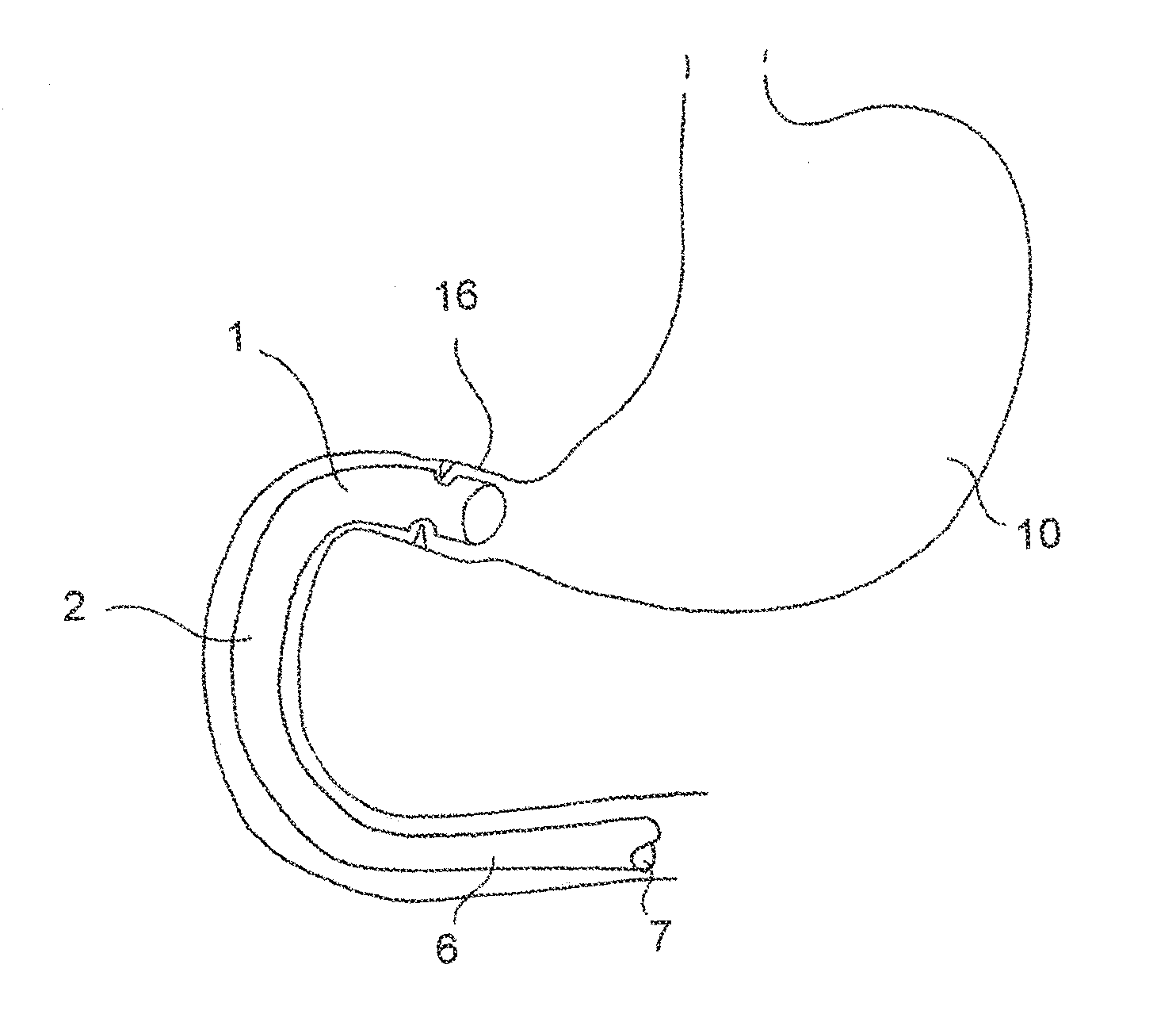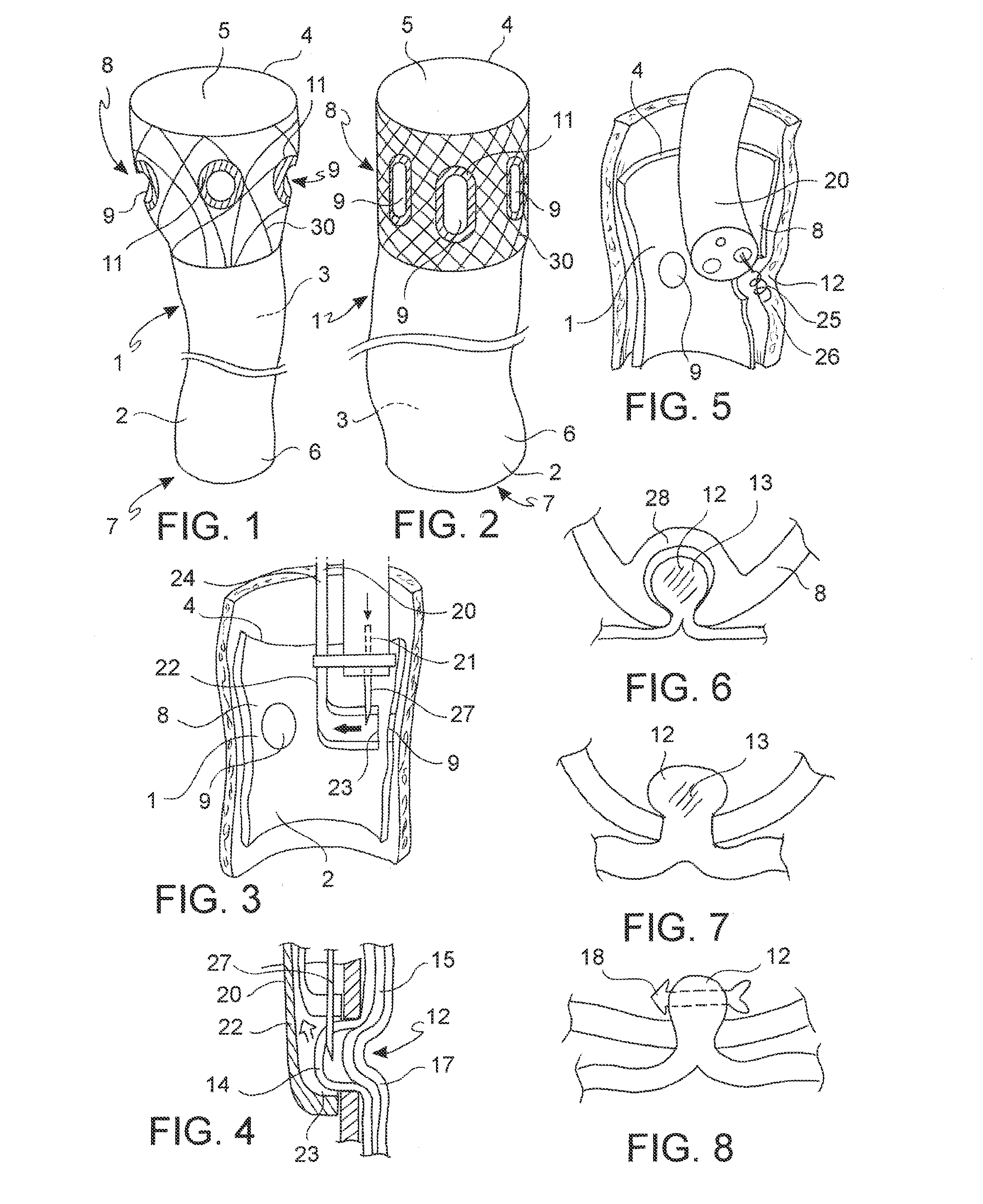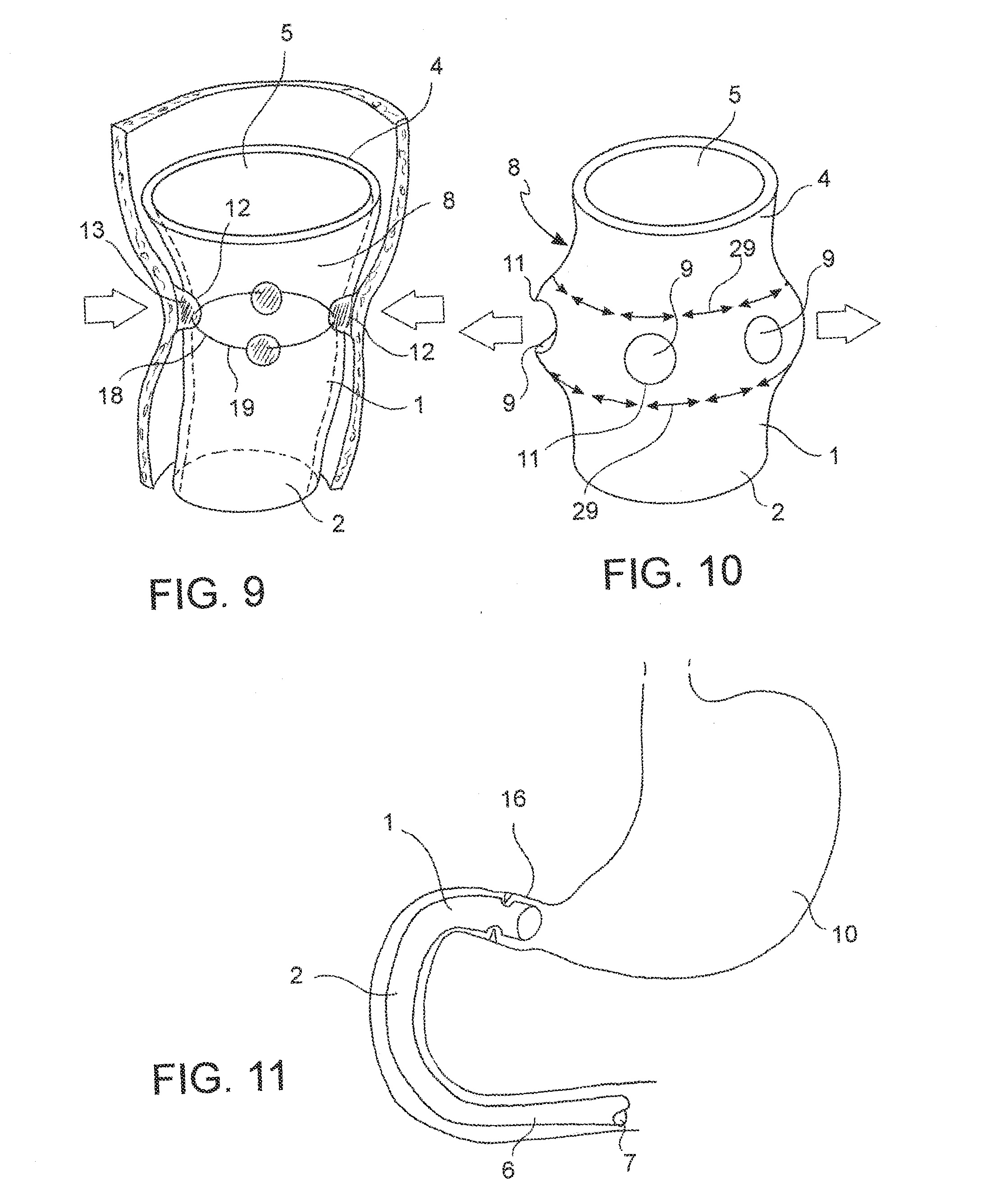Device for Anchoring an Endoluminal Sleeve in the GI Tract
a technology of endoluminal sleeve and gi tract, which is applied in the field of medical devices and methods, can solve the problems of reducing the ability of the gastrointestinal tract to absorb calories from food, reducing the efficiency of the digestion process of chyme, and reducing the shape lock of the tissue portion trapped inside the anchoring seat, so as to improve the shape lock of the tissue portion and ensure the effect of sealing against leakag
- Summary
- Abstract
- Description
- Claims
- Application Information
AI Technical Summary
Benefits of technology
Problems solved by technology
Method used
Image
Examples
Embodiment Construction
[0031]Referring to the drawings where like numerals denote like anatomical structures and components throughout the several views, an endoluminal sleeve device 1 for internally lining a section of the GI tract, particularly a section of duodenum distally from the pylorus, comprises a sleeve 2 configured for deployment inside a duodenum of a human subject, the sleeve 2 having walls of a flexible material defining a sleeve lumen 3, a proximal end 4 defining a proximal lumen opening 5, and a distal end 6 defining a distal lumen opening 7. The device 1 comprises further a tubular anchoring portion 8 which forms the proximal lumen end 4 and which has a plurality of anchoring seats 9 delimited by an annular collar 11 forming an opening through which adjacent tissue portions 12 can be pulled into the anchoring seats 9. The device 1 comprises further expansion means adapted to act on the tissue portions 12 arranged in the anchoring seats 9 such that the tissue portions 12 expand to a dimens...
PUM
 Login to View More
Login to View More Abstract
Description
Claims
Application Information
 Login to View More
Login to View More - R&D
- Intellectual Property
- Life Sciences
- Materials
- Tech Scout
- Unparalleled Data Quality
- Higher Quality Content
- 60% Fewer Hallucinations
Browse by: Latest US Patents, China's latest patents, Technical Efficacy Thesaurus, Application Domain, Technology Topic, Popular Technical Reports.
© 2025 PatSnap. All rights reserved.Legal|Privacy policy|Modern Slavery Act Transparency Statement|Sitemap|About US| Contact US: help@patsnap.com



